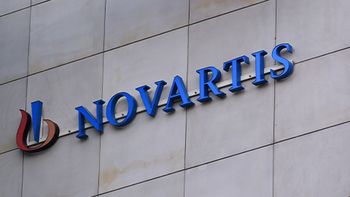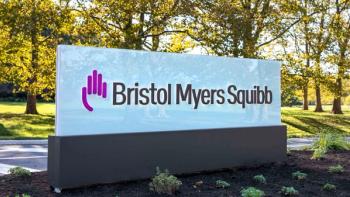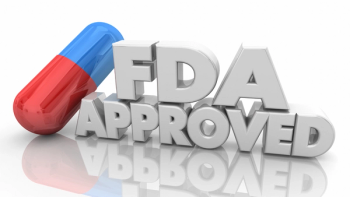Key Takeaways
- FDA Priority Review for TAR-200: Johnson & Johnson’s intravesical gemcitabine system receives fast track status for Bacillus Calmette-Guérin-unresponsive high-risk non-muscle invasive bladder cancer.
- Strong Clinical Results from SunRISe-1: TAR-200 achieved an 82.4% complete response rate with over half of patients remaining cancer-free at one year.
- Bladder-Sparing, Minimally Invasive Treatment: TAR-200 offers a durable, non-surgical option that avoids cystectomy in most patients.
The FDA has granted Priority Review to Johnson & Johnson’s (J&J) TAR-200, a novel intravesical drug-releasing system designed to deliver sustained doses of gemcitabine directly into the bladder for patients with high-risk non-muscle invasive bladder cancer (HR-NMIBC) who are unresponsive to Bacillus Calmette-Guérin (BCG) therapy. According to the company, the decision was based on results from the Phase IIb SunRISe-1 trial (NCT04640623), which demonstrated significant benefits in patients with HR-NMIBC.1
How Could TAR-200 Redefine Treatment for BCG-Unresponsive Bladder Cancer?
“TAR-200 represents an innovation in drug delivery that has not been seen in decades,” said Yusri Elsayed, MD, MHSc, PhD, global therapeutic area head, oncology, Johnson & Johnson Innovative Medicine, in a press release. “The FDA Priority Review for TAR-200 underscores our mission to fundamentally change the way urologists treat certain types of bladder cancer.”
SunRISe-1 Cohort 2: Key Design and Endpoints
- The single-arm, open-label, cohort 2 SunRISe-1 trial evaluated the safety and efficacy of TAR-200 in 220 BCG-unresponsive HR-NMIBC patients with carcinoma in situ, with or without papillary tumors, who were ineligible for, or elected not to undergo, radical cystectomy. Patients in cohort 2 received the treatment as a monotherapy.
- The primary endpoint of cohort 2 was complete response (CR) rate at any time.
- Key secondary endpoints included duration of response, safety, overall survival and quality of life.
Promising Clinical Results
- Results showed a CR of 82.4%, with 52.9% of patients remaining cancer-free for at least one year.1
- The median duration of response reached 25.8 months, with some patients remaining cancer-free for over two years without additional treatment.
- At the 12-month mark, 86.6% of patients had avoided cystectomy.3
- Most adverse events (AEs) were reported to be mild to moderate and severity.
- The most common AEs included pollakiuria, dysuria, urinary tract infection, micturition urgency, hematuria, cystitis noninfective, and urinary tract pain.1
Unmet Needs and Longstanding Gaps
According to J&J, little has changed regarding the standard of care for patients with HR-NMIBC over the past 40 years despite advancements.1
Bladder Cancer Burden in the United States
According to the American Cancer Society, bladder cancer is more common in men than in women. It is estimated that by the end of 2025, there will be approximately 84,870 new cases of bladder cancer and 17,420 deaths from bladder cancer in the United States. Currently, it is the 10th leading cause of cancer death in the United States. Women have a one in 333 chance of dying from the disease, while men have a one in 125 chance.
A Shift in Mortality Trends
Bladder cancer mortality rates have remained relatively unchanged for many years but have seen a gradual decline of about 1% annually since 2013. This improvement is likely due to earlier detection driven by greater awareness, along with advances in available treatment options.4
Looking Ahead
“Bladder cancer is one of the ten most common cancers worldwide, yet treatment options have remained largely unchanged for over 40 years, leaving patients with few choices if initial BCG therapy does not work,” said Christopher Cutie, MD, VP, disease area leader, bladder cancer, Johnson & Johnson Innovative Medicine, in an April press release. “TAR-200 is designed to allow for sustained delivery of medication directly into the bladder through a brief and routine procedure, which benefits patients. These data now show patients can remain cancer-free for a meaningful period of time, marking a significant step forward for those facing this challenging disease.”3
References
- Johnson & Johnson receives U.S. FDA Priority Review for TAR-200 NDA in high-risk non-muscle invasive bladder cancer. J&J. July 17, 2025. Accessed July 17, 2025. https://www.jnj.com/media-center/press-releases/johnson-johnson-receives-u-s-fda-priority-review-for-tar-200-nda-in-high-risk-non-muscle-invasive-bladder-cancer
- A Study of TAR-200 in Combination With Cetrelimab, TAR-200 Alone, or Cetrelimab Alone in Participants With Non-Muscle Invasive Bladder Cancer (NMIBC) Unresponsive to Intravesical Bacillus Calmette-Guérin Who Are Ineligible for or Elected Not to Undergo Radical Cystectomy (SunRISe-1). Clinicaltrials.gov. Accessed July 17, 2025. https://clinicaltrials.gov/study/NCT04640623
- Johnson & Johnson’s TAR-200 monotherapy demonstrates highest complete response rate with sustained clinical benefits in patients with certain types of bladder cancer. J&J. April 26, 2025. Accessed July 17, 2025. https://www.jnj.com/media-center/press-releases/johnson-johnsons-tar-200-monotherapy-demonstrates-highest-complete-response-rate-with-sustained-clinical-benefits-in-patients-with-certain-types-of-bladder-cancer
- Key Statistics for Bladder Cancer. American Cancer Society. Accessed July 17, 2025. https://www.cancer.org/cancer/types/bladder-cancer/about/key-statistics.html





